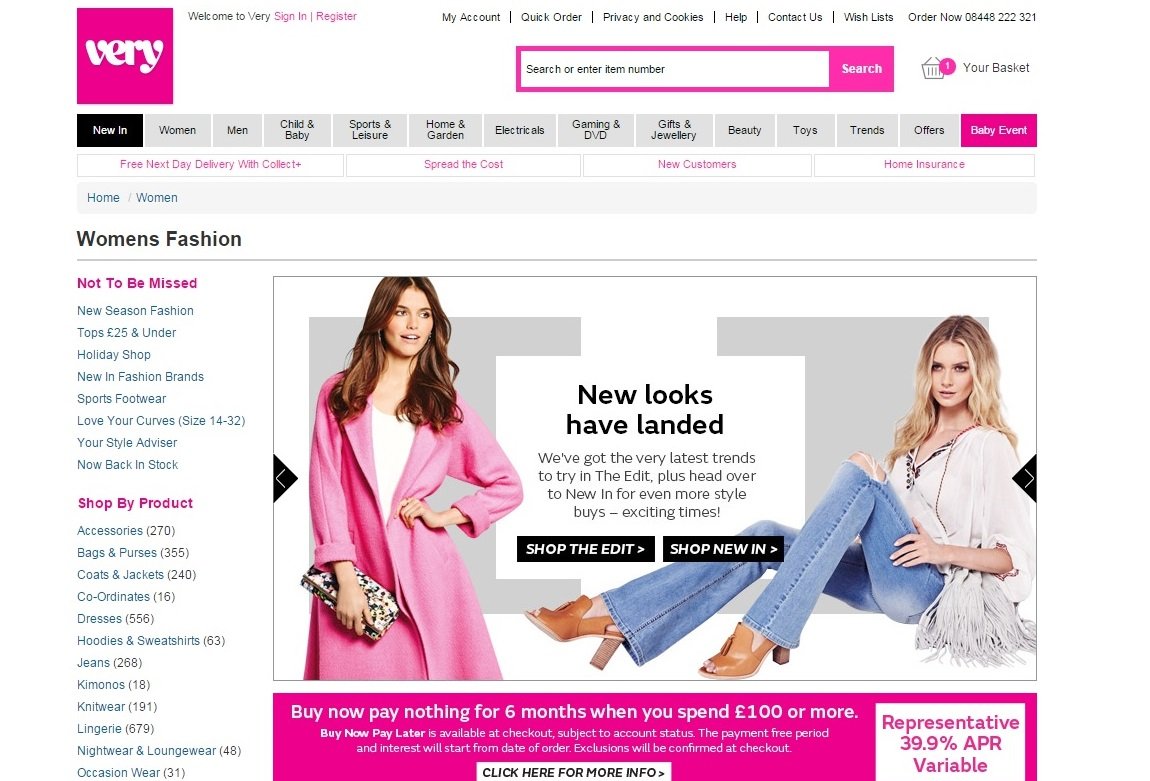Q&A With the Expert: What We Can Learn From Shop Direct’s Personalisation
By Intern |17 Mar 2015
Very.co.uk is launching personalised homepages in a bid to create the best tailored shopping experience in the world, as personalisation steps up a gear.
Shop Direct, which owns Very.co.uk, believes personalisation will add £20m in sales this financial year. Last year, the online retail group which also owns Littlewoods, among others, generated sales of £1.74bn and pre-tax profit of £40.4m.

Shop Direct has been innovating in the digital space. This month it integrated posts from shoppers’ social media accounts onto Very.co.uk in a bid to display more user-generated content as part of its #veryme campaign. And in January it launched a new iPhone app which included image recognition technology, so customers could take pictures of garments they liked and find similar products on the Very.co.uk site.
It is clear that offering a unique personalised experience is key to ensuring the group continues to grow.
Ever since Amazon started using algorithms to recommend products to customers; brands and retailers have clamoured to follow suit in an attempt to tap into the individual customer to gain their trust and loyalty.
Most retail chains now offer product recommendations based on previous searches and purchases on their website, while others also offer vouchers and discounts on products that the customer regularly buys in a bid to make the customer journey more enjoyable, and strengthen the relationship .
It seems as people become even more reliant on technology, and the ‘internet of things’ – a term to describe devices, such as fridges and heating, which are connected digitally – develops, there will be increased opportunities to offer personalisation, and consumers are already beginning to demand it.
So, as Shop Direct ups the ante with its new homepages, how will it work and how can smaller brands offer personalisation?

We ask our expert, head of conversion services at Fresh Egg, Duncan Heath.
Shop Direct is launching personalised homepages for customers on its fashion website Very.co.uk– what are your initial thoughts?
In theory it’s a very positive move. Homepages are often the most generic pages on a website as they aim to cater for all audiences and try to remain intent-agnostic. However, this is usually only due to a lack of information about individual visitors.
When a website or app has access to robust visitor information then a more customised experience can be offered on the first and on future interactions. Customised experiences tend to be more enjoyable and cause less friction.
The move – which the retailer believes is a world-first – is using a special algorithm and the wealth of customer data that Shop Direct has – how might something like this work?
Personalisation algorithms are becoming more prolific all the time, with each company developing one claiming that theirs is the most powerful or accurate. In a nutshell, these algorithms use demographic data about a user (e.g. location, device) combined with browsing behavior (e.g. products viewed, search terms used) to display personalised experiences.
Shop Direct is in a good position to gather more data about users than most as it operates a number of websites and apps in the same space, including Very.co.uk, Littlewoods, Isme and K&Co. If these businesses are sharing data across all platforms and devices properly, their personalisation opportunities will be brilliant.
For example, a user might visit Very.co.uk on their laptop and browse a selection of Disney Frozen toys. They may then open their Littlewoods iPhone app later in the day and there on the homepage might be some Disney Frozen toys.
How might this impact conversion rate optimisation (CRO)?
Introducing personalisation can impact split testing experiments you’re running on the site and can skew data if you’re not careful. Precautions need to be taken to minimise variables when split-testing and so it may be necessary, depending on the type of personalisation, to turn it off for a proportion of visitors while they are in a split test. Once you have results, personalisation can be turned back on again. Overcoming these challenges is undoubtedly worth it, however, as split testing and personalisation together can deliver formidable results.
For more information, check out Econsultancy’s blog.
How might other smaller companies add personalisation to their websites?
There are lots of personalisation options available for businesses of all sizes, from automated shopping cart abandonment emails that remind the user they have something in their basket, to personalised product recommendations based on complex computer-learning algorithms. Setting up good personalisation is often quicker and more straightforward than people think, and Fresh Egg can help businesses get up and running with this.
For more information, read my blog.
Are there any drawbacks to this approach?
Getting personalisation wrong can be worse than not doing it at all. Recommending the wrong products, offering visitors offers on products they’ve already bought (this happens more often than you might think), displaying a different navigation to visitors each time they visit – all of these things can cause frustration and harm brand perception. This is why it’s so important not to just launch personalisation and hope for the best. All changes to a site should be split tested and monitored closely to see if they deliver the uplift they promise.
If you would like to add personalisation to your website, Fresh Egg can help. Get in touch with the CRO team today and check out our work.